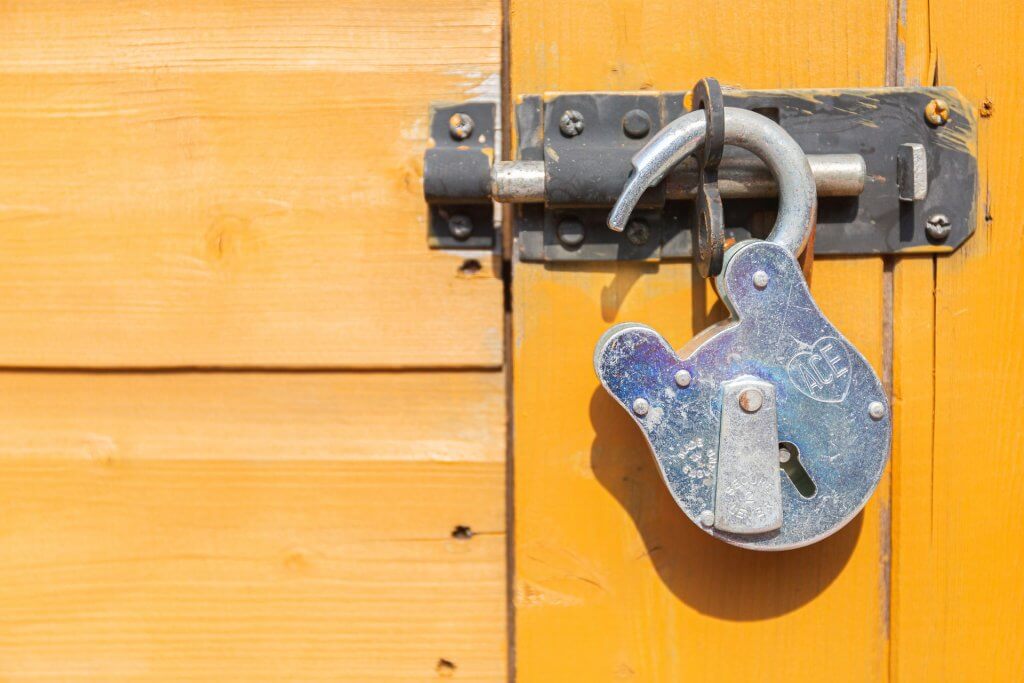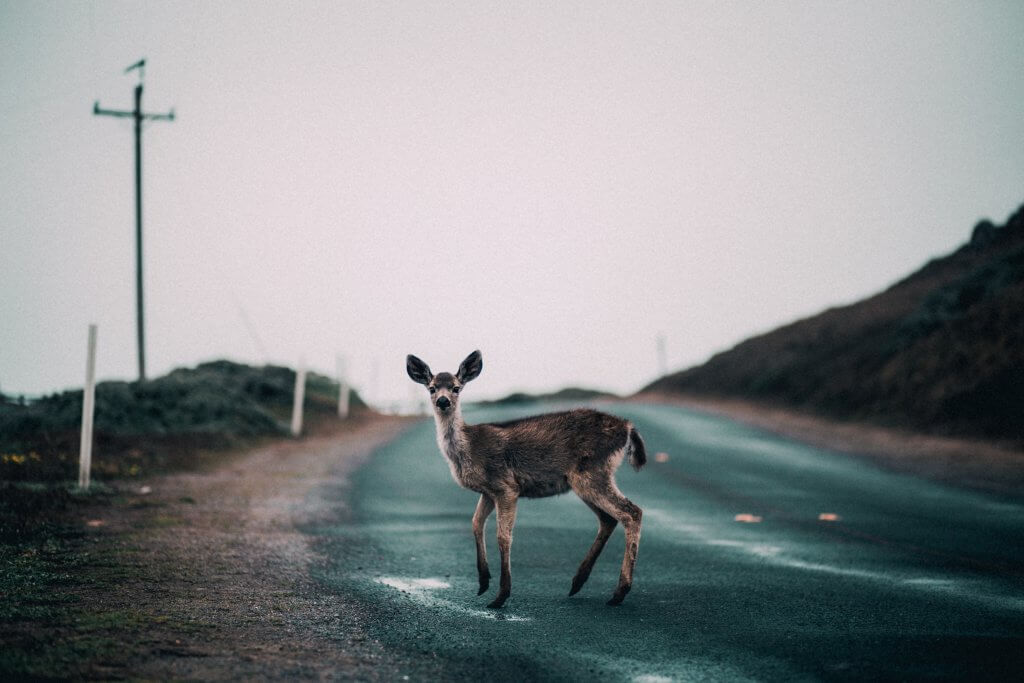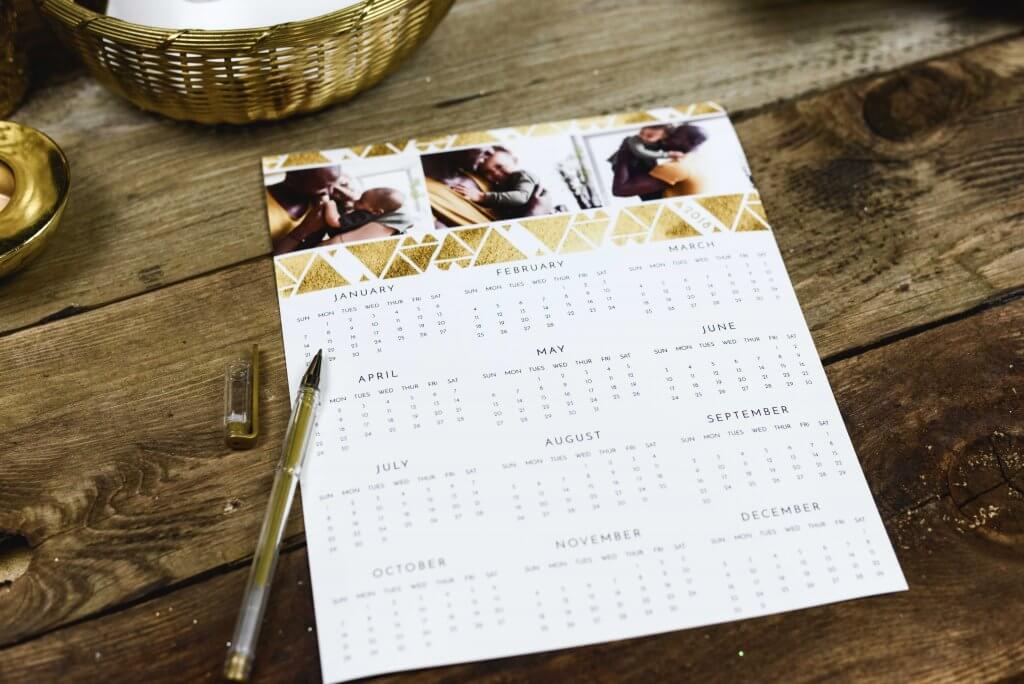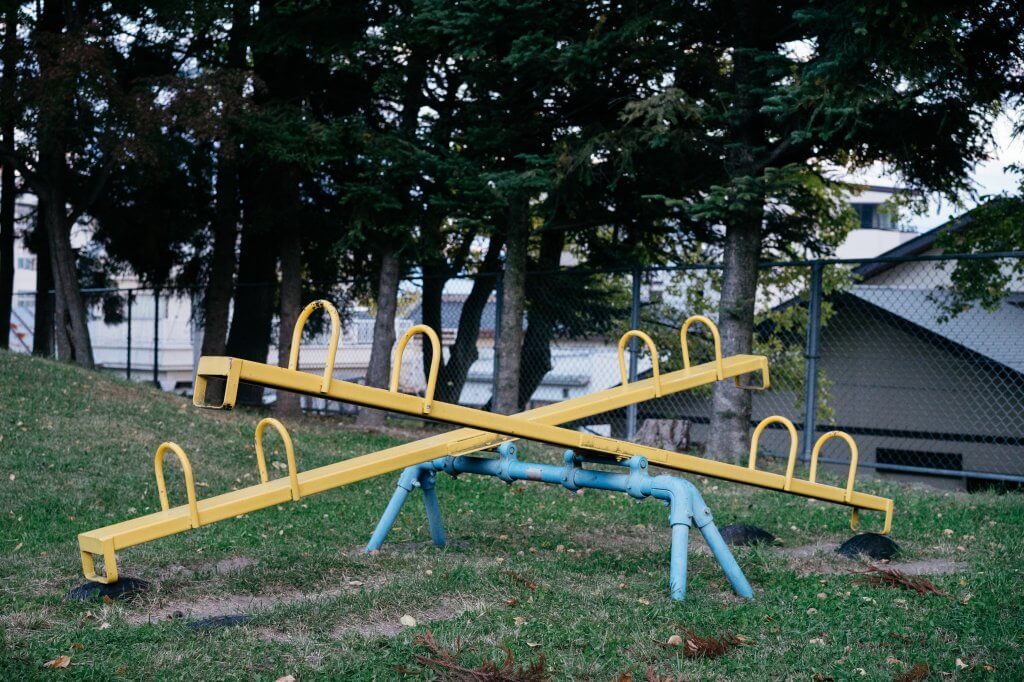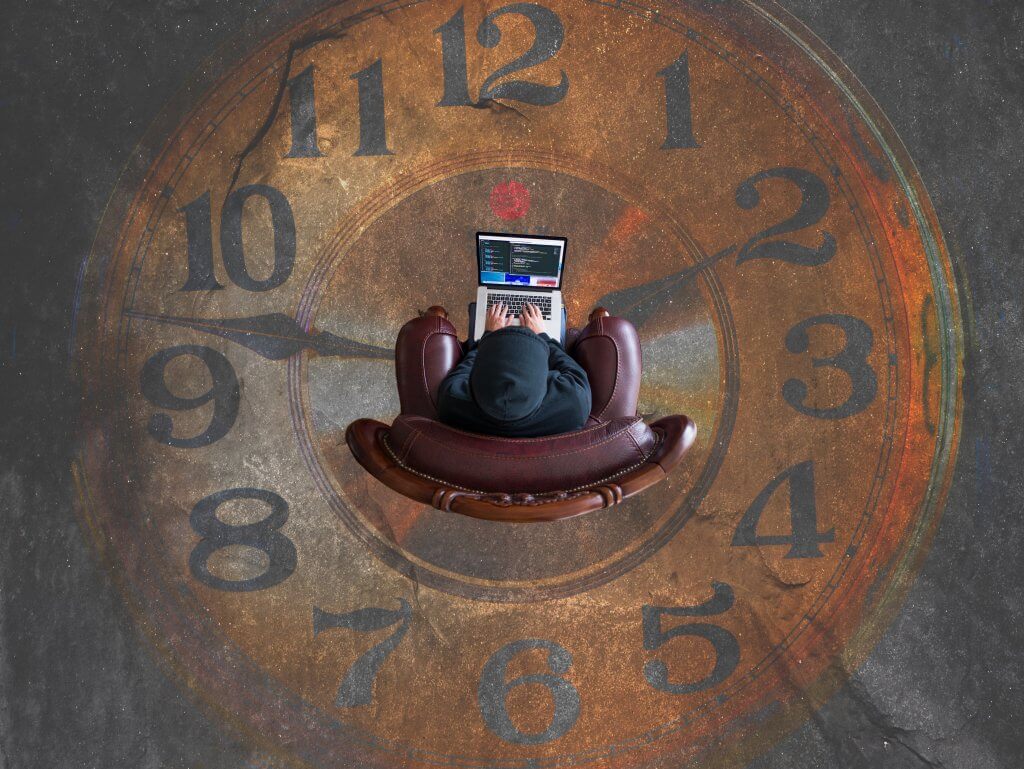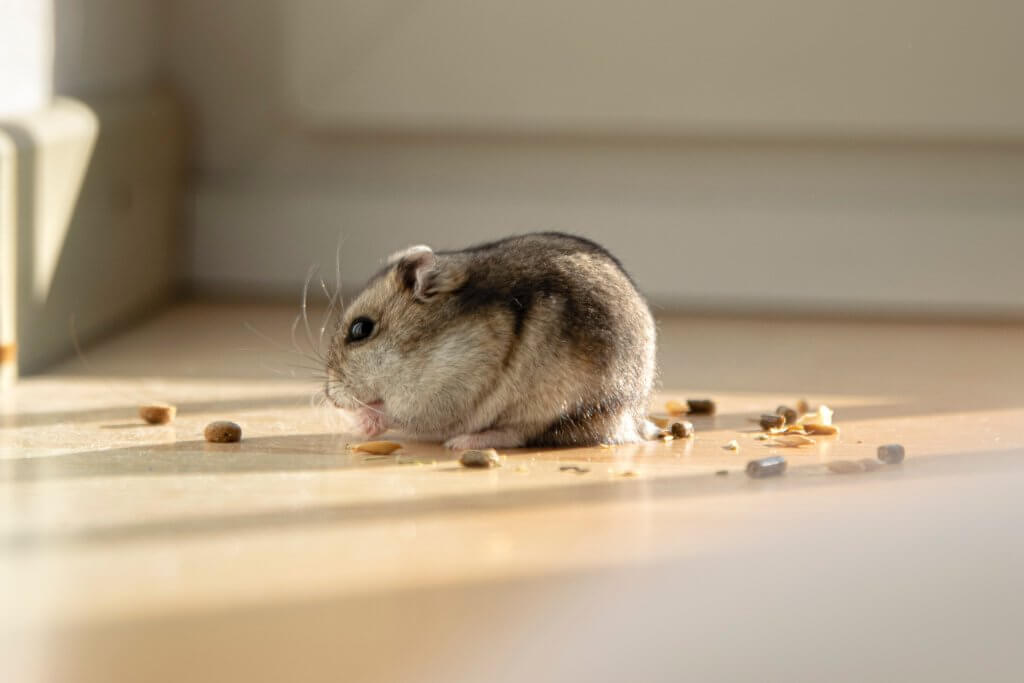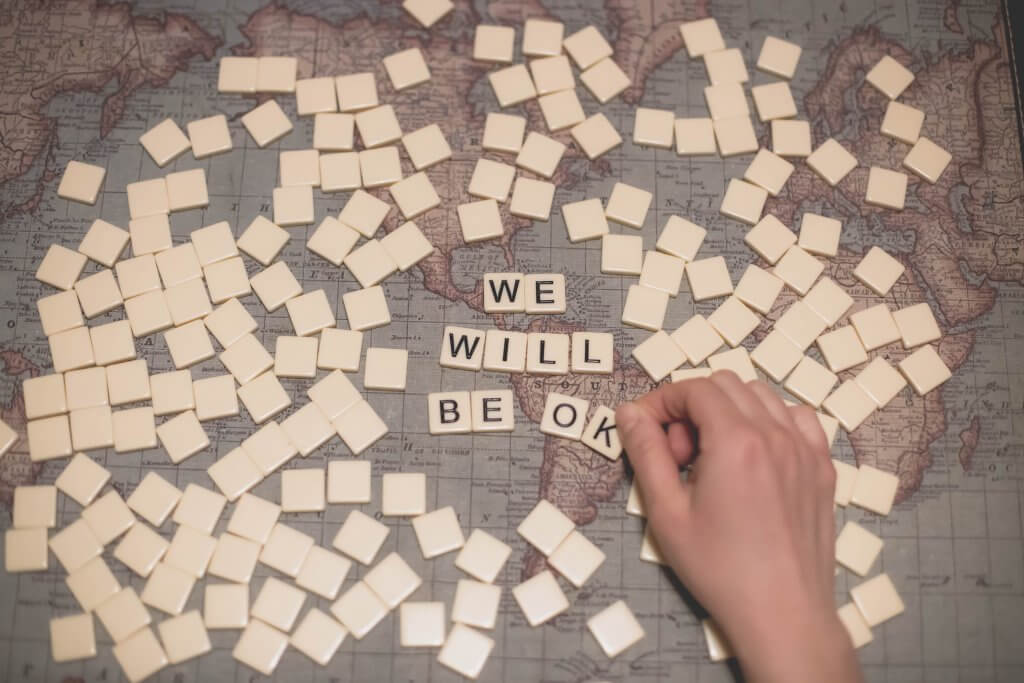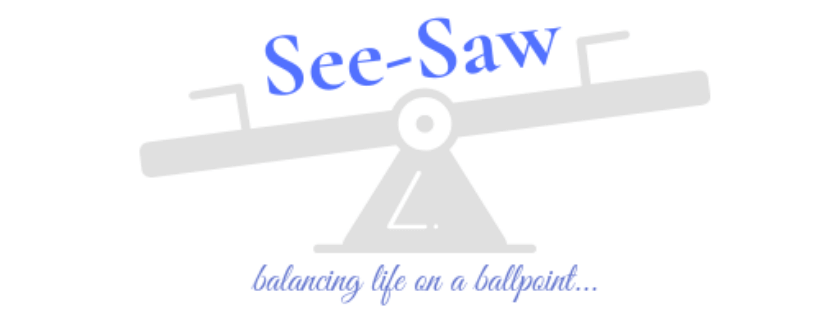

A creative wellness blog by Amelia Nashe
Top 5 Techniques To Playing At Life
Hey, lockdown readers! I hope you are all well and staying safe. So originally I was intending to write this post a couple of weeks back, but, somewhat ironically I’ll admit, between my ongoing day job, writing work and keeping in closer contact with my loved ones, there wasn’t much time left for play, let alone writing about it! But over the last couple of weeks I’ve made a concerted effort to do something with an element of play, if not every day, then certainly plenty of times over the course of the week. Sure enough, on the days that I introduced something playful and fun, I found my mood has lifted and I have felt more alive, more active and somehow more ‘me’.
If you want to get in on that feeling, or if you’re simply bored of lockdown, check out my top five suggestions to get you started:
1. Make Like a DeLorean and Go Back…
Recent Posts
Archives
Right back to your childhood. Think what activities, hobbies or interests made you happy then. Pick one or two to take up again today. And sure, not everything will be a suitable option. Playing Stuck In The Mud with a bunch of pals or climbing trees may not be all that doable these days – but then again, climbing trees should definitely count as exercise and it’s certainly an inventive way to make sure you stay two metres apart from everyone, so who knows? Where you may once have been ‘cooking’ up make-believe potions full of leaves and probably poisonous berries with a generous helping of mud, maybe now it’s making up your own recipe for the perfect brownie. Word to the wise on that one, best make it flour-less and egg-less, if the state of my local shops’ shelves are anything to go by…cue horrendous jokes about being sure you bakers will ‘rise to the challenge’ (sorry, couldn’t resist).
While you may have to adapt your childhood hobbies to the current situation or your adulthood capabilities, it is that very challenge that will force you to get into the playful spirit of the thing. The bigger the challenge, the more inventive you will have to be to make it work for you, and the more you’ll get out of your playtime! My example of this is trying to race mini wind-up penguins with my mum and brother – across two tables 400 miles apart. Now I’m not saying this is some childhood family tradition – that well-known family activity of penguin racing must have skipped our rural household – but as a kid I was never one to ignore an opportunity for racing my brother. So that is exactly what I did with my Easter Sunday. It was utterly ridiculous, very ambitious given that we just had each other’s web cam feeds to rely on for the results, and, above all, SO much FUN! So yes, get in touch with that inner child of yours and ask them what they want to do for a change.
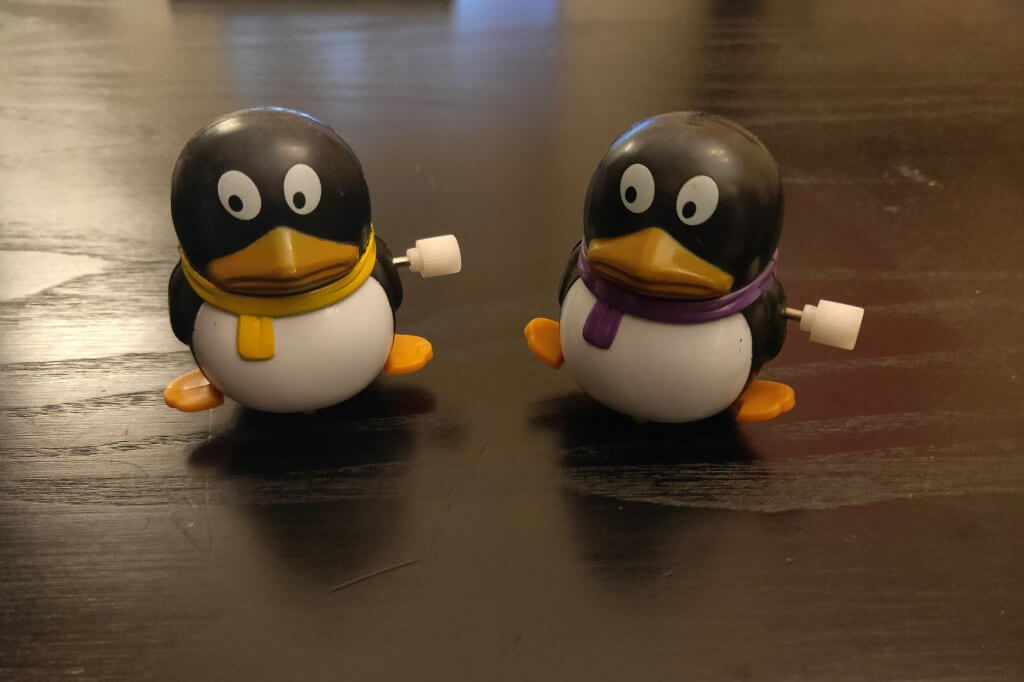
2. Make a Game Out of Learning
Talking of change, you know that language you always said you’d learn some day? Or that instrument that’s sitting gathering dust in the corner? Now is the time to pick up the plectrum, open the phrase book and figure out a fun way to learn something new. Many of us go through so-called phases of learning such things and then quit when it gets ‘too hard’ for us. But all too often, ‘too hard’ really means our approach to learning this new skill was actually too rigid and inflexible,

turning what used to be an exciting prospect we were itching to get our hands on into a boring slog of a chore. I experienced this myself when I took piano lessons at school. Initially keen to learn to play, my enthusiasm was slowly quashed by the unbending, strict regime of the world’s worst piano teacher, who never once asked me what I would like to learn and instead insisted on me playing mind-numbing scales and plodding classical numbers (to this day, I hate Bach) I found dull at best.
As a result, all of the fun and playfulness was sucked out of piano for me, and I was put off the idea for good.
But if you design your learning around what excites you about it, you will never suffer the same fate. For instance, if you want to learn Italian so you can go on holiday to an obscure part of the country (post-Covid, obviously) and speak the language, think about what kind of situations you will be in on holiday and shape your learning around those.
It may be a good idea to role-play the different scenarios, either with a lockdown buddy, remotely via the video conferencing platform of your choice, or you could check out the various language apps and YouTube videos online. If it’s an instrument, write down your top 5 favourite songs that you would love to be able to play, and find someone who is able to teach you how to play those specific songs – far more fun than learning chords or scales for what can feel like no good reason! Both cases involve identifying why you think it would be fun to learn this new skill and going about it in an active, imaginative way tailored to what you want. That is the space in which learning becomes playing.

3. Be Curious!
Curiosity may have killed the cat, but taking things for granted or ignoring them killed the spirit of play and made us all a lot more miserable. Normally, when we are going about our daily lives, running the rat race, most of us tend to rush straight from A to B, so wrapped up in what’s going on in our heads we hardly notice our surroundings along the way, let alone ask questions about them. But if we were to do so, we might learn more about the world around us and appreciate the small, beautiful things of life, such as the delicate glory of tree blossom, the cute way squirrels bound around, the artistry and imagination of graffiti, etc.
If you practise mindfulness at all, all of that will be very familiar to you. But I’m not just suggesting noticing and appreciating your surroundings, as mindfulness does.
If you are able to get out and about at all for exercise/essential shopping, or even if you have a decent view out of a window, lockdown is an excellent opportunity to exercise the muscle of curiosity. Speculate. Wonder. In the same way that kids go through that age when they are ceaselessly asking questions.
But instead of asking a parent or guardian, ask yourself the questions and use your imagination to come up with answers. On the way back from a hefty food shop the other day, I paused to nurse my aching hands back to life in the park and noticed a plastic wallet cellotaped onto the bench opposite. It had a piece of paper inside with a kid’s drawing of a rainbow on it and the words, hank you to whoever cleared up the litter’. It made me smile, but I didn’t just stop at thinking, ‘Aw, how sweet!’
As an exercise in curiosity I wondered what kind of kid wrote it and whether it was their parents’ idea to put it up there or if they did it on their own. I wondered whether it was done as part of their home schooling or outside of that time. Within a minute I’d come up with a little story about it, and kept myself entertained while I was waiting for the blood flow to return to normal in my bag-lifting hands. Paying attention to small things and making up stories like this is another thing we tend to do when we’re young, but neglect as we get older, instead dismissing little observations like this into the category of ‘unimportant’, ‘not worth my time’.
But when you actually take the time to do it, it’s a very rewarding activity. And as I say, it needn’t be from observations made while out and about. It could be something you observe from indoors, from your window – the behaviour of an animal, the clouds or people passing by. Many may think this isn’t useful, but it can be very satisfying and actually, if you think of your imagination as a muscle, this is the equivalent of stretching before/after you do a full work-out.
4. Surprise!
On the other hand, to quote many action films and Star Trek, ‘Never underestimate the element of surprise.’ If I had to pick just one theme that came out from my research, it would be the vital link between playfulness and novelty. Psychologist Nick Wignall isn’t shy about the connection, stating:

So it follows that predictable routine is the enemy of play. If you want to rediscover how to play properly, you should be spontaneous every once in a while, surprise yourself. One simply way in which you could do this, if you are allowed to leave your house at the minute, is to walk in a direction you have never gone before, and instead of checking Google Maps or planning your route beforehand, just wander, deciding where to turn on a whim of the moment, or even on the toss of a coin.
I did this the other day and discovered some truly lovely residential areas with lots of green spaces I never knew existed. I also experienced a sense of challenge and achievement in finding my way back after wandering at whim for so far I had basically got myself lost. At one point I nearly gave up and resorted to Google Maps, but I resisted the urge, and am very glad I did, as not knowing where I was made me engage my brain a lot more and invited a fun spirit of adventure.
If walking is not an option for you, you could try surprising yourself in other ways. If you normally live by a rigid routine, try breaking said routine to, e.g. have a massive spontaneous rave round your living room instead of cooking the dinner, change up your mealtimes, and see how it makes you feel. If you haven’t got a rigid routine, but are naturally a lark, try sleeping in and spending all day cosy in your PJs. If you are naturally an owl, force yourself to get up early just this once and do something fun with your morning.
It almost doesn’t matter what; if your behaviour is truly novel and has some element of challenge to it, without pressure, your sense of play will be ignited and you’ll feel the fun.
5. Be Bold and Don’t Judge

Finally, this isn’t so much a specific suggestion, but more of a general guide to the principle of the thing. However you choose to spend your playtime, be brave with it, take the ‘go big or go home’ attitude. The key to being able to have this attitude in the first place, and probably the second most important thing to bear in mind about playing, is you are officially NOT ALLOWED to judge yourself. Along with the predictability of routine, this is the main reason why we lose touch with our ability to play as we grow up: judgement.
When we’re kids, we simply don’t judge – ourselves or others. As long as it doesn’t hurt anyone, all fun is fair game. But as we grow up, society, peer, family and individual expectations get piled on and our behaviour becomes self-conscious and constricted as a result. To learn more about how this happens, check out Jacqueline Emerson’s TEDx Talk, details below. But to truly enter into the spirit of play, you have to be brave and shrug all of that aside as so much dead weight.
Now, I’m not expecting anyone to be able to do this for all situations: judgement is so ingrained into the way we live it probably isn’t possible without absolutely years of hard work and therapy. But for the purposes of getting back in touch with your ability to go about life playfully, try to create a space for yourself, perhaps literally a designated time of day and a particular place, where you say to yourself, “I am playing now. I am not going to judge anything I do here.” You may find it is easier to do this if you treat it as necessary self-care, rather than something superfluous, which is how we often think of activities to do with play.
If you remember that idea of stretching your muscle of curiosity, and therefore your imagination, that too may help; whether or not you need to be creative in your work or your interactions with others, we all need to be creative to get the best out of the current situation, so that we are capable of imagining life after lockdown and any and all possible silver linings.
The Denouement of the Play
Ultimately, exactly how you play is up to you, and it will be different for everyone because playing is one of the most unique and intimate things a human being can do. Your choices in play reveal your individual personality, which I think is part of why it is such a fulfilling thing to do. I hope these suggestions will prove helpful nudges into making play an integral part of your life – or more than it is now, at least – and remember, this doesn’t just have to last for lockdown.
One of the best things about lockdown is that, assuming you are healthy, you may well have more time (and I know it can be annoying to hear that for those of us still in full-time employment or parents suddenly having to become teachers, so sorry to you guys!) on your hands at the minute, and therefore enough time to experiment with a wide range of playful additions to your life, which should allow you a rare opportunity to find the most enjoyable and effective form of play for you. If you are one of those people who have found you actually have less time in lockdown, as a very wise man repeatedly says in his new podcast, ‘There is always time to slow down’.
Whatever you choose to do to reconnect with your sense of playfulness in this difficult time, remember that true play is not only enjoyable, but has an element of novelty, is very often challenging, can be a solo or a group activity, and engages your inner child. So, without any further ado, go forth and play!
For more on finding your inner child and the value of play, check out:
Books:
- ‘Don’t Miss Your Life: Find More Joy and Fulfilment Now’ by Joe Robinson, John Wiley & Sons, 2011
- ‘Overwhelmed: Work, Love and Play When No One Has The Time’ by Brigid Schulte, Bloomsbury, 2015
Articles:
- PS I Love You, ‘7 Psychological Reasons To Be More Playful As An Adult’, by Nick Wignall, 2019
- The Genius of Play, ’10 Ways Adults Can Be More Playful’, by Kathleen Alfano, 2020
- Tiny Buddha, ’10 Ways To Make Your Life More Playful’, by Melissa Kirk, 2019
- Vince Gowman, ‘6 Ways To Live a Playful Life’, by Vince Gowman, 2019
Videos:
- Ruth Watson, ‘Inner Child Creativity & Unlocking Your Playful Side’, by Ruth Watson, 2019
- TEDx, ‘Hold Onto Your Inner Child’, by Jacqueline Emerson, 2012
- TEDx, ‘The Importance of Play’, by John Cohn, 2013
- TEDx, ‘To Lose the Child Within’, by John Renison, 2015
Podcasts:
Recent Posts
- Top 5 Techniques To Playing At Life May 1, 2020
- The Playground of Life April 1, 2020
- Top 5 Techniques To Make Failure Work For You March 1, 2020
- What A Fail! Why Fear Of Failure Is A Forking Farce February 1, 2020
- Top 5 Techniques to Build Confidence December 1, 2019


A creative wellness blog by Amelia Nashe
The Playground of Life
So. What a difference a month makes when there’s a global pandemic on, eh? Wow. I’m guessing I can speak for everyone when I say the past month has been pretty traumatising. For some more than others, I am sure. I hope you are all well and keeping yourself and those you love safe.
Thanks to the chaos of the past wee while, I haven’t done any prep for writing this post at all. But I figured that regardless of whether I’ve done my homework, it’s actually very important to be reaching out and talking about mental health, creativity and overall wellbeing, now more than ever. This will be especially true for the freelancers amongst you, who may well be stuck at home blinking in shock like a deer in headlights at all the work that’s just vanished before your eyes, anxious about the future. As someone who’s had the first performance of her play indefinitely postponed, and lost a bunch of fantastic opportunities, I feel your pain.
Recent Posts
Archives
With all this fear and uncertainty around, it can be very easy to slip into cycles of obsessively watching the news, and consequently going around feeling very serious and hyper tense all the time. Trust me, no one understands the urge to do that more than me. Hell, it’s actually my day job to do that in the act of subtitling the news, so I’m contractually obliged! Currently, the only good thing about having a job that forces you to embrace the spiral of anxiety (aside from the fact that I am very lucky to have a job at all in this situation) is that apparently my role has been classed as ‘critical to broadcast services’, which makes my inner child just a little bit smug. Talking of my inner child, I have decided to use this post to write about the concept of play. Something I think we could all do with a bit more of in our lives, especially in these scary times.
Why Play?
The obvious answer lies in the date at the time of posting this. And if you don’t know what I’m talking about, you probably have a rare form of amnesia called gullibilipeptia, recently discovered by a scientist who got it by touching the utensils used to make a Big Mac.*
This is actually a topic I always planned to write about here. In fact, when I was trying to come up with a blog name, I wrote down concepts and ideas I knew I wanted to write about, and the idea of the importance of remaining playful in the way we approach life, that Peter Pan-esque ‘never-want-to-grow-up’-ness of creativity, was a big focus.
Hence why I landed on ‘See-Saw’ for the title of this blog. Not only is it, as I have said in previous posts, intended to convey the constant movement and up and down equilibrium of life, as well as referencing the fact that I hope what I discuss here will help people ‘See’ more about themselves than they ‘Saw’ before (I know, groan-worthily cheesy); it’s a nod to the connection to childhood in each and every one of us. Because when was the last time you found a see-saw in your place of work? If the answer for anyone out there is ‘last week’, please do let me know, I would LOVE it if someone has a playground in their office.
Personally, I have always been fascinated with the difference between children and adults, inspired and somewhat scared by the notions evinced in Peter Pan, Chronicles of Narnia, Pan’s Labyrinth and countless other classic tales on the topic. Overwhelmingly, such stories tell of children’s ability to see and do incredible things adults can’t because they are too serious and do not interact with the world in a playful or imaginative way. This is clearly not a new idea. It is something that has permeated our culture (and not just ours, given that Pan’s Labyrinth was made by Mexican filmmaker, Guillermo del Toro) for centuries, possibly millennia.
Our attraction to playing has certainly seeped into our language, through phrases like, “All work and no play makes Jack a dull boy”. We seem to dread the lack of it, and equate it with evil, baddies, sadness and, of course, the ultimate crime, being boring. It makes sense that we also tend to link the loss of our playful natures with adulthood. After all, that’s when all the serious, boring, dutiful stuff creeps in, such as work, bills, rent/a mortgage, caring responsibilities, and the dreaded tax return. I mean, who jumps for joy at the prospect of any of those?
It’s a strange person indeed who gets an astronomical electricity bill due to their new homeworking arrangements (this isn’t me, of course!) and says, “What a fun game this is!”
And so, the fear is that as these things fill up our lives more and more as we progress through adulthood, we forget why or how to play and become joyless slaves to duty and responsibility, weighed down by the seriousness of it all. This is why I think now is a good time to remind everyone of the value of play. We are living in a time where things can feel pretty grim, where the consequences of not doing your duty are arguably higher than they have ever been in our lifetimes. But for many of us, that duty basically means sitting on our arses at home doing nothing. So not only do we need a bit of light relief in our lives to get through the next few weeks and months, but for many this lockdown offers a unique opportunity to get creative and rediscover your playful inner child.
A Play or To Play? What Counts as Playing?
But what does it mean to play? If your normal work is fun or creative anyway, where do you draw the line? Sitting down to write a play doesn’t necessarily feel like playing. Or does it? This question takes me back to a typically bizarre Drama module I did during the first year of my BA degree at Exeter. It was called ‘Acting and Not Acting: The Dialectics of Performance’. Sounds incredibly poncy, doesn’t it? I hate to disillusion you, but the truth is it actually involved a bunch of intelligent, minimum AAB grade students spending several hours playing catch or stuck in the mud.
My abiding memory of this module is being told to lead the warm-up for a practical session at 9am whilst horrendously hungover after a Fresher’s party the night before. Note to any budding drama teachers out there: telling a hungover student to “make the star jumps your own!” in an incredibly chirpy voice risks serious injury – or at least, it would do if looks could kill. So on this occasion, what was considered by one person (the drama lecturer) to be a playful activity to unleash our inner creativity, was experienced as a dreaded chore undertaken dutifully and reluctantly by another (yours truly). Proof that this business of defining play is not simple, but more a case of one person’s marmite is another person’s jam.
But as the great tale of Peter Pan shows us, play is more about entering into the spirit of the thing. In the slightly bastardised (but nonetheless brilliant) Hollywood spin-off version of the tale, Hook, the adult Peter Banning (Pan grown up) is unable to fly until he stops fearing the consequences of failure and genuinely connects with the emotions of love, wonder and joy, via memories of simpler, less encumbered times. Once he recaptures these feelings, he is able to enjoy the fun and freedom of flying, and is finally able to play properly with ‘the lost boys’, even using his newfound abilities to be more creative than them in playfighting, and so, win the game.
This beautiful story is meant to reassure us that adults can play, and do it even better than kids can, if they can just get into the right mindset. Once again, it’s all about how you view life.
To go back to the question at the beginning, if you write a play with a sense of playfulness, for the joy and the fun of it, then yes, it is playing. But if you write it stressed out of your mind about your deadline, with a billion other responsibilities and duties clamouring in your mind for attention, you will end up viewing it as a chore, and will probably lose your ability to come at it with true creativity.
Aside from the fact that you won’t enjoy it, just as Peter hates being forced to try to fly before he finds his sense of play, you will be less likely to spend time experimenting and finding new ways of succeeding with your creative endeavour – like Peter improvising some flying moves that ultimately win him the swordfight against Head Lost Boy, Ruffio – if you don’t connect to the joy and simplicity of your inner child.
It’s Child’s Play
The above phrase implies something that’s easy, and a little beneath you; perhaps even viewed with contempt. I reckon the meaning of this phrase is very telling. It reveals what we, as a society, think about the nature of playing. And it’s not good. And yes, that’s just one phrase. But words have power. I wouldn’t be a writer if I didn’t believe that. Also, it is far away from being the only indication of what society thinks of people who make a habit of playing purely for fun. There’s the habitual reaction you face from the vast majority of people when you say that you’re a gamer.
This comes from personal experience, as I spent years being amused by the looks of surprise and the all too predictable reactions of, “I don’t know how you find the time” or “I just never got into that” with a nice dollop of condescension on the side.
Much worse, the closet nerd status of those who play Dungeons and Dragons has all but made them into a secret society. This may be beginning to change, thanks to the huge popularity of Netflix’ Stranger Things, but still the message is clear. Playing for the sake of it is not cool.
It’s alright to fantasise about it in feel-good family films, books and plays such as Peter Pan, but in reality any adult who spends a decent chunk of their time playing games is often seen as a bit of a loser. If Peter Pan was real, he’d probably get diagnosed with some kind of age disorder and ADHD, and be put on meds to calm down his mischievous creativity.
But why such disparity between the real world and fiction? How is it that as adults, we can long for the return to a childlike playfulness in films, but can’t own up to it in the real world? My theory is that it’s jealousy, plain and simple.
Because, global pandemics aside, a huge proportion of us live in a world where we have convinced ourselves the only way to live is to run the rat race of the to-do list harder and faster than everyone around us. And somewhere along the way, it becomes easier to stop trying to make time to do stuff for fun, to play. Amidst the resulting stress, we can very quickly lose touch of what it’s like to approach life in a playful way. The only game in life becomes the competition to earn the right to #WinningAtLife. But really, what’s the point of rattling through the to-do list in record time if you’re not enjoying it?
There’s a fantastic speech at the end of one of my favourite films, the great Richard Curtis’ ‘About Time’, in which – SPOILER ALERT – the protagonist with the ability to travel back in time within his own life finally says he has stopped using time travel to go back and fix things, in favour of this approach to life:

Now, just quoting that film doesn’t do this very powerful dramatic moment justice and I highly recommend you give it a watch, but you take the point. For this character, despite having what is essentially the superpower of having as much time as he likes, his priorities aren’t getting things done perfectly or getting more things done, but savouring every moment of life as it comes. In other words, having fun. Society approval or no, I for one think he could be onto something.
Play On?
So that’s pretty much it from me for now. I would just like to reiterate that this lockdown, for all its stresses and strains, gives many of us an opportunity to press pause on the rat race of life. It gives you a chance to reflect, to re-evaluate how you run your life in ‘normal’ circumstances, and work out if there is another way to do things. Who knows? Maybe by the time we are finally rid of this disease and life goes back to ‘normal’, the landscape of your life will have changed from a blinkered rat race to a playground of possibilities. Now that may sound a bit grandiose to you, but if you can’t get away with being grandiose now, when can you?
I hope you’ve enjoyed reading this post (because if you’ve read it purely out of a sense of duty and got this far, let’s face it, you really have missed the point!) and found something in it that’s useful or inspiring to you. Please don’t hesitate to comment below if you have something to say on the topic of play. Given the speed at which everything is moving in the world at the minute, I am considering seriously stepping up my blogging efforts to write and post one per week or every other week, for the next wee while at least, but to be completely honest I haven’t worked out yet if I can make the time to commit to that. I’m pretty certain I’m going to get the next post out considerably earlier than I would have otherwise, though, so please do stay tuned to my Facebook page and social media accounts if you want to catch that. My next post will be about ways you can reconnect with your inner child and live playfully, with ideas specially tailored to a life lived in lockdown. For now, stay safe, stay at home, and stay healthy. Love to you all. Xx
Recent Posts
- Top 5 Techniques To Playing At Life May 1, 2020
- The Playground of Life April 1, 2020
- Top 5 Techniques To Make Failure Work For You March 1, 2020
- What A Fail! Why Fear Of Failure Is A Forking Farce February 1, 2020
- Top 5 Techniques to Build Confidence December 1, 2019


A creative wellness blog by Amelia Nashe
Top 5 Techniques to Make Failure Work For You
Greetings, my fellow See-Saw-ers! So it’s already March – how did that happen?! Valentine’s and Pancake Days have come and gone and in my local park, the tulips are somehow still naïve enough to think it’s Spring, even as the snowflakes cover them and the hail batters them for what must be the third wintry March in a row. You can’t help but look at the delicately blooming, brightly coloured poor wee sods and wonder how they never learn.
Appropriately enough for the subject of this post, I failed to mark Pancake Day because I was too busy talking about pancakes at a hundred miles an hour to eat any. And no, that was because I was on the late shift at work, subtitling some incredibly fast and random banter between a bunch of news presenters, not because I could talk the hind legs off a mule. Which, in all fairness, I could.
But of course over the past month, that has by no means been my only failure. Only this month, that’s just meant I’ve had more material on which to try out my research. I’ve read countless blogs, positivity quotes, listened to hours and hours of podcast episodes and gone to sleep watching so many YouTube videos around the subject of dealing with failures I’m practically the Dalai Larma. Okay, so that’s a total exaggeration, but what I will say is putting the below techniques into practice has already started to help me redefine failure, and change my habitual thinking about myself when I fail. So without further ado, I’ll share with you my five-step practical plan to make failure work for you:
Recent Posts
Archives
1. Bring on the pain.
So you’ve just found out that you’ve failed at something. Whether it’s a mistake you’ve made, a job or opportunity you’ve not been given, or a relationship that has broken down. Let’s be honest: it feels shit. Even if it’s something you didn’t consciously expect to succeed with, or something really small, it can still wipe the smile off your face, give you that little drop of dread in your stomach, a gut punch feeling like a toddler has smashed their dinky fist right into your abdomen.
As for the bigger stuff, well, that hurts. We’ve all been there. And it’s only natural to immediately want that hurt to go away, to push it down, distract yourself, ignore it. But, contrary to what you might expect in a blog post about making your relationship with failure more positive, I am actually advising you to lean into that pain. Don’t get me wrong, this is not permission to wallow. I’m not suggesting you take to your bed with a box of tissues and a stress ball for the rest of your life. Just allow yourself to feel the emotions that come up in the immediate aftermath of failure. They are a sign that you care, after all. And who wants a life they don’t care about?


When I first came across this advice in my research, I thought it was a bit self-indulgent, but since then I have scarcely read a well-informed article/blog post or listened to/watched a podcast or video that doesn’t at least mention the idea of sitting in your pain before you do anything else to deal with failure. You may think it’s not productive, but I’m telling you, all the experts agree there’s simply no getting round it. Embrace the fear, dread, anger, resentment, anxiety, sadness, jealousy and whatever else comes up for you for just long enough to understand and acknowledge what you feel.
If you find it’s a complex muddle of feelings you can’t even identify, maybe try writing them down, or even just writing about the facts of what happened, as this can often help you to untangle the knots of complex emotion we sometimes tie ourselves into. If it’s an overwhelmingly powerful feeling and you just need to get it out, try speaking to a loved one who will listen. Trust me, it will help you get over the failure quicker. This is a strategy that I have long adopted automatically, so I can speak to its effectiveness.

An ex-boyfriend once commented that I always get extra emotional in the moment of the failure and seem to need to vent/worry about it, but then as soon as I’m done venting I can go back to being productive. He marvelled at it and seemed to be suspicious of the truth of the initial emotion, but I responded that it was the venting and the release of (very real) emotion that then allowed me to be productive. It’s a process of catharsis, of getting the emotion out as quickly as possible so that none of your energy is then wasted on repressing it later. Even on a simpler level, as Psychology Today puts it,
So in summary, before you do anything else you’ve got to bring on the pain.
2. Go academic.
You’ve felt the emotion, now it’s time to bring in the big guns: the intellect. Look at your failure as if it’s a university assignment. If you studied any kind of Arts degree like I did, that should mean analysing the shit out of it in as detached a manner as you can manage. And yes, I know this may seem different because, as we have just established, there may be strong emotions involved. But when I had to write an essay on John Milton’s Paradise Lost, there were some pretty strong emotions involved too, and I managed not to write an essay that consisted of emotional bias such as “Milton is so far up his own arse in this I’m surprised the poem ever made it to the light of day”.
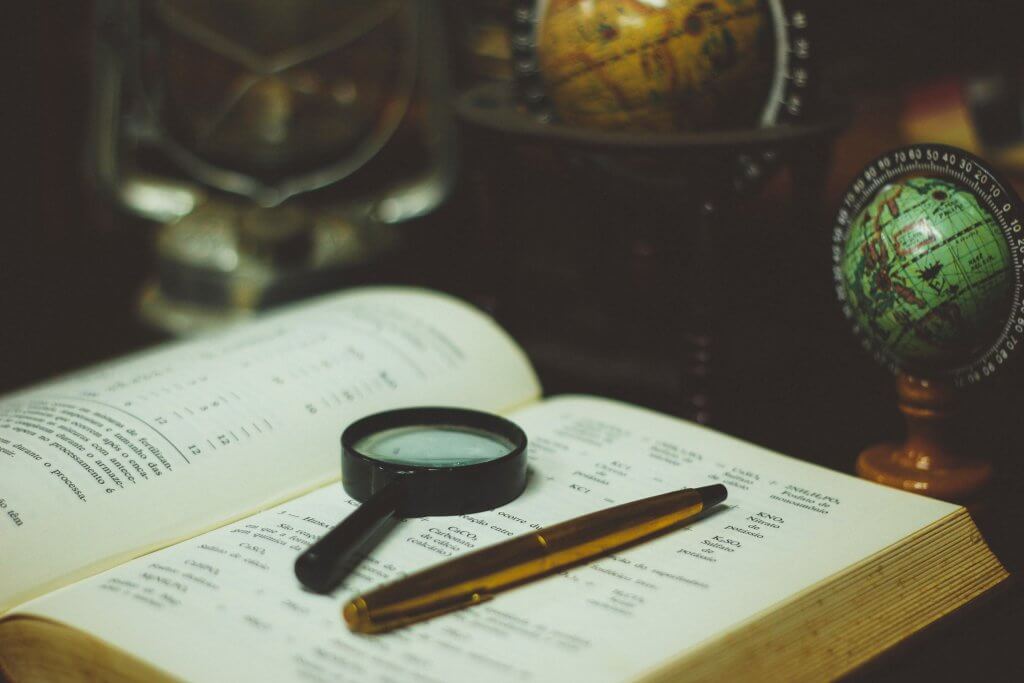
If I achieved that, you can have a go at viewing your failure dispassionately. Look at the facts – what happened, what were the circumstances? Work out how much it is really your failure in the sense of mistakes or lack of preparation, and how much it is down to the other people involved, or rather the better success of other individuals. Try your best to be honest and just look at the facts with this, as that is the only way to learn and improve. As the verywellmind blog puts it neatly,
It takes courage to own up to your part in a failure, but doing so will enable you to move forwards. Equally, if you are taking all the blame onto yourself for not doing a good enough application to a competition you know gets literally thousands of applications, well, with those numbers there is bound to be a certain amount of luck involved, and you can’t possibly know whose applications happened to stand out because what they have written strikes a chord with the reader.
Wherever the responsibility for the failure lies, it is important to work out why you failed on this occasion so that you can…
3. Make like a bee and make a plan[t].

I know, the bee thing is cheesy, but their whole thing is busy productivity, so it kind of works…no? No. Ah, well. I will attempt to work on my animal-related metaphors by the end of this post and come up with something better. Which is a very neat segue into the reason why you need to make a plan. To recap, you’ve got stung by the failure; sworn like a trooper in the moments afterwards and posted pics of your pain all over Insta to elicit validating cries of ‘Ooh, that looks sore!’; you realised it happened because you chose to sit right next to the bee’s nest with honey on toast and a can of juice – translation for non-Scots readers, a fizzy, sugary drink. What next? Other than a good squeeze of savlon and a firm telling off for crowbarring in more bee metaphors?
Obviously this has not been a pleasant experience, so you don’t want it to happen again. What do you do? Simples. Make a plan to try to prevent it happening again. It may seem “duh”-inducingly obvious, but in reality quite an alarming proportion of us conclude that the best thing to do is to just not try again. To basically give up and go home, and never stick our heads above the parapet ever again, lest they be blown off in a swarm of beestings.
Michael Litt, a very charismatic entrepreneur, demonstrated this tendency of human nature in a TED talk where he showed his audience an optical illusion and asked them to shout out to indicate which line in the illusion was longer.

The majority of the audience confidently shouted out that they were the same length, but after he showed them they were in fact wrong – and had therefore failed to answer the question correctly – and asked them a similar question later in the talk, he was met with a deathly silence. The point he was making was that most people in that room had ‘learned’ not to even risk failure by speaking up. They had decided their previous experience of failure was so negative that it wasn’t worth trying again. But, as he went on to argue, this is the wrong attitude to take if you want to succeed.

Don’t be discouraged by failure. Easy to say, hard to do, right? But this is a huge part of how to do it. So, having worked out why you failed in the previous step, make a plan that will hopefully stop you failing in the same way next time you try. And when I say make a plan, I mean actually write it down. If you don’t know where to start, start small. Take the next thing you are hoping to succeed at and break it down into individual tasks that take into account where you failed last time. This will help motivate you to move forward, and the quicker you do that, the quicker you’ll fail and therefore the quicker you’ll succeed. So yeah, get planning like the busy bee you are!
4. Obsess no more.
Our brains are odd things. Even after we think we’ve got strategies in place, things to do to shift our negative attitudes, they come right back at us with worries about the future and fears about past failures repeating themselves. As the former Chief Business Officer for Google X, Mo Gawdat, says in his interview on the How To Fail podcast,

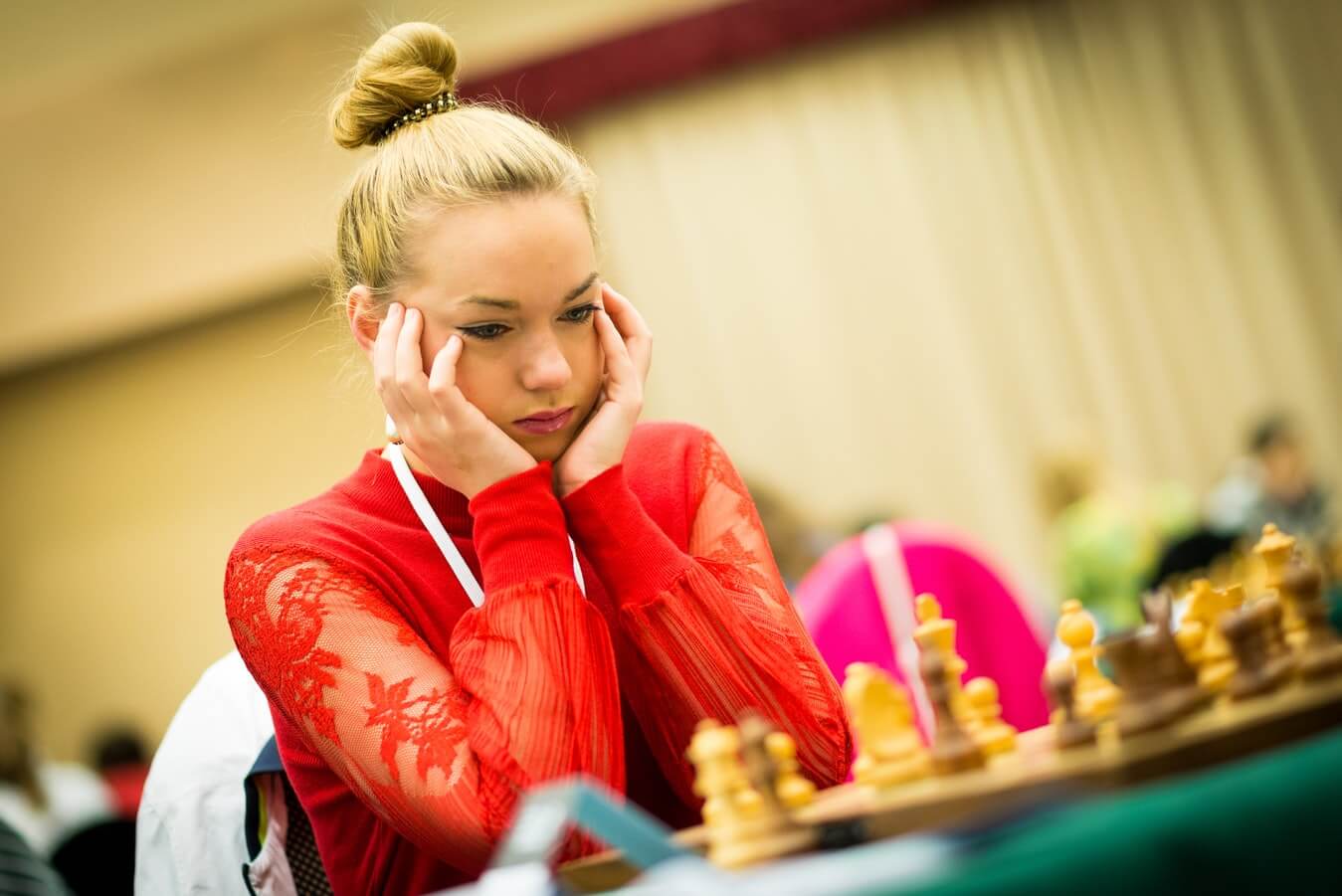
He goes on to explain that the incessant thinking is the negative ruminations that come from an evolutionary impulse that, if we let it, will lead us to constantly worry about the dangers of what might happen in any given situation. In our modern-day lives, these ‘dangers’ may include looking stupid in front of other people – as in the TEDX talk example – rather than getting eaten by tigers, but the brain works with what it’s got. Useful thinking is analytical, problem solving, the part of your brain you will have used to analyse what went wrong in this particular instance of failure. Joyful thinking is observational, simply looking outside of yourself in the present moment and appreciating what you have and the world around you.
I, for one, found the simplicity of this ‘triad of thought’ theory appealing. Firstly because it gave me an excuse to use the words ‘triad of thought’. But mostly because I hear a lot about how ruminative, obsessive or incessant thinking – call it what you want, it’s all the same thing – is a bad habit that is at the root of my and lots of others’ anxieties, and how we need to learn to ignore it. ‘I am no longer going to believe everything I think’ is my latest positive affirmation. This is all well and good, but after you’ve told your brain you don’t believe you’re a total failure because you lost your debit card in your own home (true story), what then? It’s not about to shut up, just because you called it out for lying. So do you ignore it? It’s quite tiring trying to ignore your brain. And boring. I mean,

if you’re constantly doing things to try to distract yourself from what you’re thinking and never actually allowing yourself to think deeply, you’ll find yourself living a very shallow life…

Instead, Mo Gawdat offers the solution of switching to useful or joyful thinking. So if you find yourself spiralling back into obsessively beating yourself up for your past failures or worrying about the likelihood of failure of your next attempt, do yourself a favour and say this to yourself – out loud, if it helps: “Is that really true? And even if it is, how is it helpful? Give me a helpful thought, something I can act on.” This is where you can steer yourself back to your plan, taking positive action that you wouldn’t know to take if it weren’t for your previous failure.
If the ruminative thoughts are too persistent to focus on taking positive action, try joyful thinking. Literally stop and look at the world around you. Take stock of your place in it, in the ‘big picture’. Are you healthy? Do you have a roof over your head? Do you have supportive friends? Do you have a partner? It’s not just about feeling thankful for these things, but it’s also about viewing them as successes partly made by you. Yes, there is a certain amount of luck involved, where you were born, etc. But also, you wouldn’t have friends if you weren’t succeeding in maintaining those friendships. You wouldn’t be healthy if you weren’t succeeding in looking after yourself. See what I’m getting at? Even when your brain is telling you your entire existence is an epic fail, if you look around you, you will realise that is clearly not the case. So, useful thinking or joyful thinking. Take your pick.

5. Get inspired.
In our celebrity-centric society, we are constantly bombarded with stories of famous people’s success – especially at this time of year, when we’ve just had the awards season in film and TV. That’s absolutely not what I’m saying you should look at here. In fact, my advice would be to ignore all the glam and the glitter, and look for the stories of the failures behind the success. Notice I used the plural ‘failures’ with the singular ‘success’. That’s because for any one perceived success, there will be many, many failures. Everybody’s favourite quote to use is legendary American basketball player, Michael Jordan’s:

Just epic, isn’t it? The sheer number of failures this guy had to go through to succeed. But succeed he did, in spectacular fashion. And another oft-quoted example is that of Thomas Edison. Inventor guy, you might have heard of him, made a pretty decent contribution to the lightbulb that’s currently making sure I can see to type this. Anyway, he spent decades of his life working on experiments that failed, and yet he said:

Now maybe he was saying that for effect, and sure, it perhaps sounds a little arrogant, but he did get there in the end, and achieved an incredible and lasting legacy because of it. I think we can all take our cue from this attitude. You don’t completely fail until the day that you give up. Until that time, you are just honing your approach, narrowing down the possible options to find the right way to succeed. When it comes to the different routes of potential success, it’s a bit like that obligatory line from a policeman to a worried suspect in any crime drama; you’re just eliminating them from your enquiries. So no matter how big the failure, you dust yourself off and get back out there. If you feel like you’re losing your way and are surrounded by demoralising success stories, check out the links below for the real and inspiring stories of failure. I promise you, you will find that the story of success and the story of failure are one and the same.

Final Thoughts on Failure
I hope all of the above ideas and tips are useful for you. I have tried to put some practical, simple things in this post that will help you shift the way you see failure. If you try them out, please do let me know how you get on. You can comment below, or reach out on social media via the links below.
I would love to see us get to a world where kids are not brought up fearing failure, in exams and the like, but running towards it, eager to learn. Or a world where we can live in the moment a bit more, not in fear of the future prospects of our endeavours or in thrall to our previous failures. This is really a subject for another post, but the thought I would like to leave you with is this:

whether we fail or succeed in the end, it is the journey that we really live for. So zen, I know. But it’s something I was reminded of the other day when I was telling someone I had just met about how I have been busy applying for funding, and now am busy working out back-up plans because I’m worried that I may not get it. And instead of sympathising and wishing me luck, as most people would have done, she replied, “Sounds fun, living in the midst of all that. A real thrill, chasing your dream”. It stopped me in my tracks, to be honest. I had to admit I hadn’t thought of it like that. But she was right. As humans, we strive for success because we want to, because the act of working towards purpose, towards something meaningful, is rewarding, fulfilling. Fun. So there you are. Once again, failure is fun. Put that in your bee sting and suck it.

Thank you so much for reading See-Saw, and please do check out the links below. There is some really thought-provoking, inspirational, potentially life-changing stuff there. Take care, and I’ll be back in April with a topic that I haven’t quite decided on yet; let’s just say I think it will be play-ful, one way or another! Xx
For more on how to make failure work for you, check out:
Books:
- ‘Solve For Happy: Engineer Your Path to Joy’ by Mo Gawdat, Pan Macmillan, 2017
- ‘Educated’ by Tara Westover, Random House, 2018
Articles:
- Cosmopolitan, ‘How To Deal With Failure And Rejection’, by Samantha Swantek, 2016
- Forbes, ‘Five Ways To Make Peace With Failure’, by Susan Tardanico, 2012
- The Guardian, ‘What to do when it all goes wrong – tips for dealing with failure’ by Siobhan Curham, 2016
- Psychology Today, ‘Mastering Failure and Rejection (Part 1 of 3)’, by Leon F Seltzer Ph.D., 2010
- Psychology Today, ‘Mastering Failure and Rejection (Part 2 of 3)’, by Leon F Seltzer Ph.D., 2010
- Psychology Today, ‘Mastering Failure and Rejection (Part 3 of 3)’, by Leon F Seltzer Ph.D., 2010
- verywellmind, ‘10 Healthy Ways to Cope with Failure’, by Amy Morin, 2019
Podcasts:
Videos:
- TEDx, ‘Rethinking Failure: Barbara Corcoran at TEDxBarnardCollege’ by Barbara Corcoran, 2013
- TEDx, ‘I Seek Failure: Adam Kreek at TEDxVictoria’ by Adam Kreek, 2013
- TEDx, ‘Why you have to fail to have a great career: Michael Litt at TEDxUW’ by Michael Litt, 2012
- TEDx, ‘Life After Failure: Evan Hansen TEDxNorthCentralCollege’ by Evan Hansen, 2016
- TEDx, ‘Failure Is Part Of Success: Eduardo Zanatta at TEDxBYU’ by Eduardo Zanatta, 2012
Recent Posts
- Top 5 Techniques To Playing At Life May 1, 2020
- The Playground of Life April 1, 2020
- Top 5 Techniques To Make Failure Work For You March 1, 2020
- What A Fail! Why Fear Of Failure Is A Forking Farce February 1, 2020
- Top 5 Techniques to Build Confidence December 1, 2019


A creative wellness blog by Amelia Nashe
What A Fail! Why Fear Of Failure Is A Forking Farce
Hello, See-Saw-er folks! After a bit of a break over the end of year/start of year holiday palaver, I am delighted to be back and See-Saw-ing again! And for anyone who thinks that’s some kind of weird innuendo or a reference to my non-existent DIY skills, I am referring to the title and point of this blog – tackling over-ambitiously deep topics that affect the mental wellbeing of busy creatives and freelancers, and of course using my witty banter of odd metaphors and self-deprecation to talk about them.

Recent Posts
Archives
Whhyyy? Why Failure?
So I thought long and hard about what to use as my first topic of the year. My initial go-to was…wait for it…new beginnings. Yes, people, my brain really is that unimaginative in January. But then I thought a bit more about the whole New Year’s resolutions thing, got my first spate of writing/producing-related rejections for the year, and heard from a friend (the wonderful Joanne Jensen of Jensen Massage Therapy, who has an excellent blog and vlog you should all check out for your physical wellbeing) that 13th January is apparently statistically the most miserable day of the year. Sorry, I know that’s grim. But we’re past it for a whole year(-ish) now, so yay!
Recent Posts
Archives
Anyway, one of the main reasons for this appears to be the fact that so many of us make New Year’s resolutions and begin to fail at them by 13th. For lots of people, it’s the mere fact of the failure itself that makes us miserable, even more than the thought of what we could have had if we had succeeded. Because what does it say about us that we failed? What kind of person does that make us? And of course, the classic: what will other people think?
What['s] A Fail?!

More to the point, what even is failure? I know you’ll be sitting there thinking, “well, that’s a stupid question. You’re just asking that to get your blog post going”. But genuinely, really, where do you draw the line under something and say, “that was a complete and utter fail”? The other day, I was listening to the incredibly successful novelist, Sebastian Faulks, being interviewed on the wonderful podcast, ‘How To Fail With Elizabeth Day’. When asked about his failures he said:

More to the point, what even is failure? I know you’ll be sitting there thinking, “well, that’s a stupid question. You’re just asking that to get your blog post going”. But genuinely, really, where do you draw the line under something and say, “that was a complete and utter fail”? The other day, I was listening to the incredibly successful novelist, Sebastian Faulks, being interviewed on the wonderful podcast, ‘How To Fail With Elizabeth Day’. When asked about his failures he said:

I don’t know about you, but this was an utter revelation for me. It raises the possibility that failure is a term that cannot be applied accurately in the moment. It takes perspective, the distance to see potential ‘failures’ as part of the bigger journey to judge whether they did in fact help you succeed in the long-run. And by definition, surely the last thing a failure should help you do is succeed. Right?
Wrong. As you’ve probably realised from the title of this post – bit of a giveaway, I know, but it’s fun, and makes use of my favourite swearing substitute from genius surreal comedy TV series ‘The Good Place’ – I am here to argue the case for failure. Not in a ‘lie down and take it like a doormat’ way, or even a world-weary ‘we’re all doomed to fail if we don’t fix the planet anyway’ way (true, but not the point of this post). Far from being the obstacle to our wildest dreams, the object of fear and despair, I would like to contend that if we go about it right, failure can actually be (oddly, I’ll admit) defined as the key to success.

Wrong. As you’ve probably realised from the title of this post – bit of a giveaway, I know, but it’s fun, and makes use of my favourite swearing substitute from genius surreal comedy TV series ‘The Good Place’ – I am here to argue the case for failure. Not in a ‘lie down and take it like a doormat’ way, or even a world-weary ‘we’re all doomed to fail if we don’t fix the planet anyway’ way (true, but not the point of this post). Far from being the obstacle to our wildest dreams, the object of fear and despair, I would like to contend that if we go about it right, failure can actually be (oddly, I’ll admit) defined as the key to success.

The Fear
Now, before I get into the hefty body of research behind this theory, I would like to just point out I’m really not one of those lucky people who just sails through life never experiencing failure. As a new writer with some pretty ‘run before you can walk’, lofty ambitions, I have experienced so many failures I have genuinely lost count. Or have I? By Sebastian Faulks’ reckoning, maybe they’re all leading up to one giant success…
But seriously, as anyone in the creative industries will know, rejection and failure are par for the course. I have had countless conversations with other writers about failure.


Now, before I get into the hefty body of research behind this theory, I would like to just point out I’m really not one of those lucky people who just sails through life never experiencing failure. As a new writer with some pretty ‘run before you can walk’, lofty ambitions, I have experienced so many failures I have genuinely lost count. Or have I? By Sebastian Faulks’ reckoning, maybe they’re all leading up to one giant success…
But seriously, as anyone in the creative industries will know, rejection and failure are par for the course. I have had countless conversations with other writers about failure.
Some ignore it, some take to the bottle or the biscuit tin, some double down on their pursuit of success. But the language of failure tends to be incredibly negative and fearful. We focus on the pain, the ‘waste’ of time and energy, the imaginary ‘what if’ scenario of success. Interestingly, when I talk to friends who are in steady careers and not dreaming of any kind of freelance, entrepreneurial or creative life, they often say things like “I think you’re really brave” or “That sounds scary” in relation to my efforts to get my writing out there in what is an extremely competitive world.
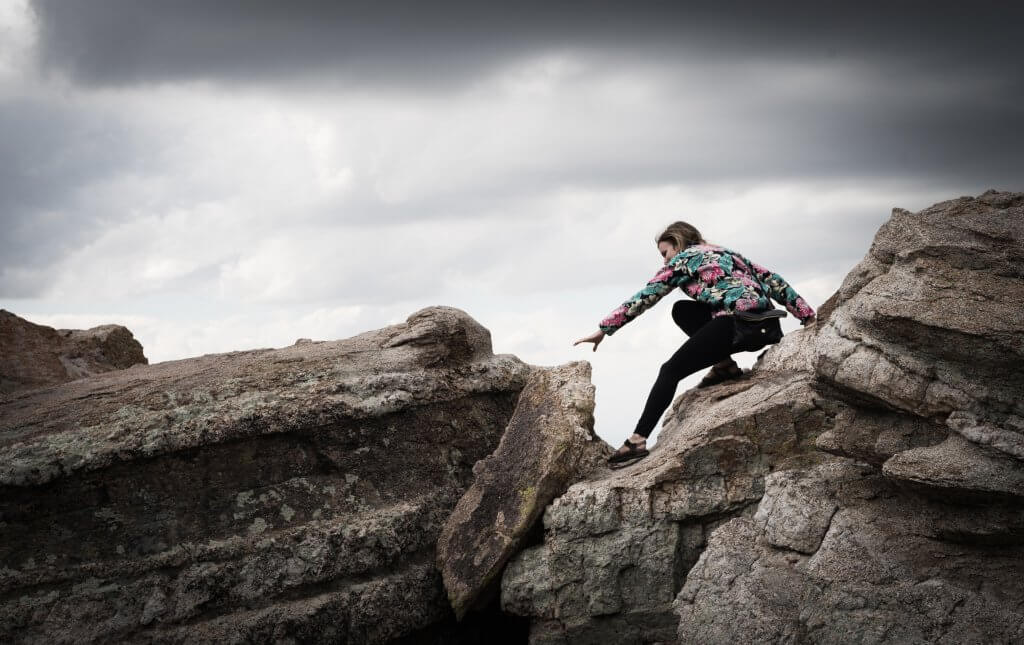
Some ignore it, some take to the bottle or the biscuit tin, some double down on their pursuit of success. But the language of failure tends to be incredibly negative and fearful. We focus on the pain, the ‘waste’ of time and energy, the imaginary ‘what if’ scenario of success. Interestingly, when I talk to friends who are in steady careers and not dreaming of any kind of freelance, entrepreneurial or creative life, they often say things like “I think you’re really brave” or “That sounds scary” in relation to my efforts to get my writing out there in what is an extremely competitive world.

The same language comes up again and again, reinforcing this idea that the very thought of doing something that comes with a high risk of failure is terrifying to us as humans.
And let’s be clear, I’m not saying failure feels good in the moment. I don’t know anyone who would say it does. I myself am an extremely sensitive and empathetic person, which is good for my writing, but means failing at things that matter to me hurts. A lot. I mean, it’s basically the reason I keep a stock of tissues on me at all times – there’s only so many times you can pretend a fly flew into your eye at Sainsbury’s when you’ve just got your fifth ‘no, thanks’ email of the week! The point of that sad little tale is I am one of the least immune people to failure out there. So if I can have a stab at losing the fear, you can too.


And let’s be clear, I’m not saying failure feels good in the moment. I don’t know anyone who would say it does. I myself am an extremely sensitive and empathetic person, which is good for my writing, but means failing at things that matter to me hurts. A lot. I mean, it’s basically the reason I keep a stock of tissues on me at all times – there’s only so many times you can pretend a fly flew into your eye at Sainsbury’s when you’ve just got your fifth ‘no, thanks’ email of the week! The point of that sad little tale is I am one of the least immune people to failure out there. So if I can have a stab at losing the fear, you can too.
If At First, You Don’t Succeed…
I don’t even need to finish that sentence, do I? I mean, if a well-meaning responsible adult didn’t hammer that saying into you as a kid, it’s basically child neglect. Just in case, it ends “try, try and try again”. One of my enduring memories of my gran, who, bless her, is now largely lost to me through the myriad cruelties of dementia, is her pep talks, which always started with “you know, can do anything you want in life”, ended with “you don’t know until you try it”, and invariably had this little gem of wisdom in the middle. Cliché it may be, but could there be some nugget of truth to it? I mean, what if we could flip the script? Instead of treating failure as something to be feared, treat is as a lesson to be actively sought out because it will help us on our path to success.
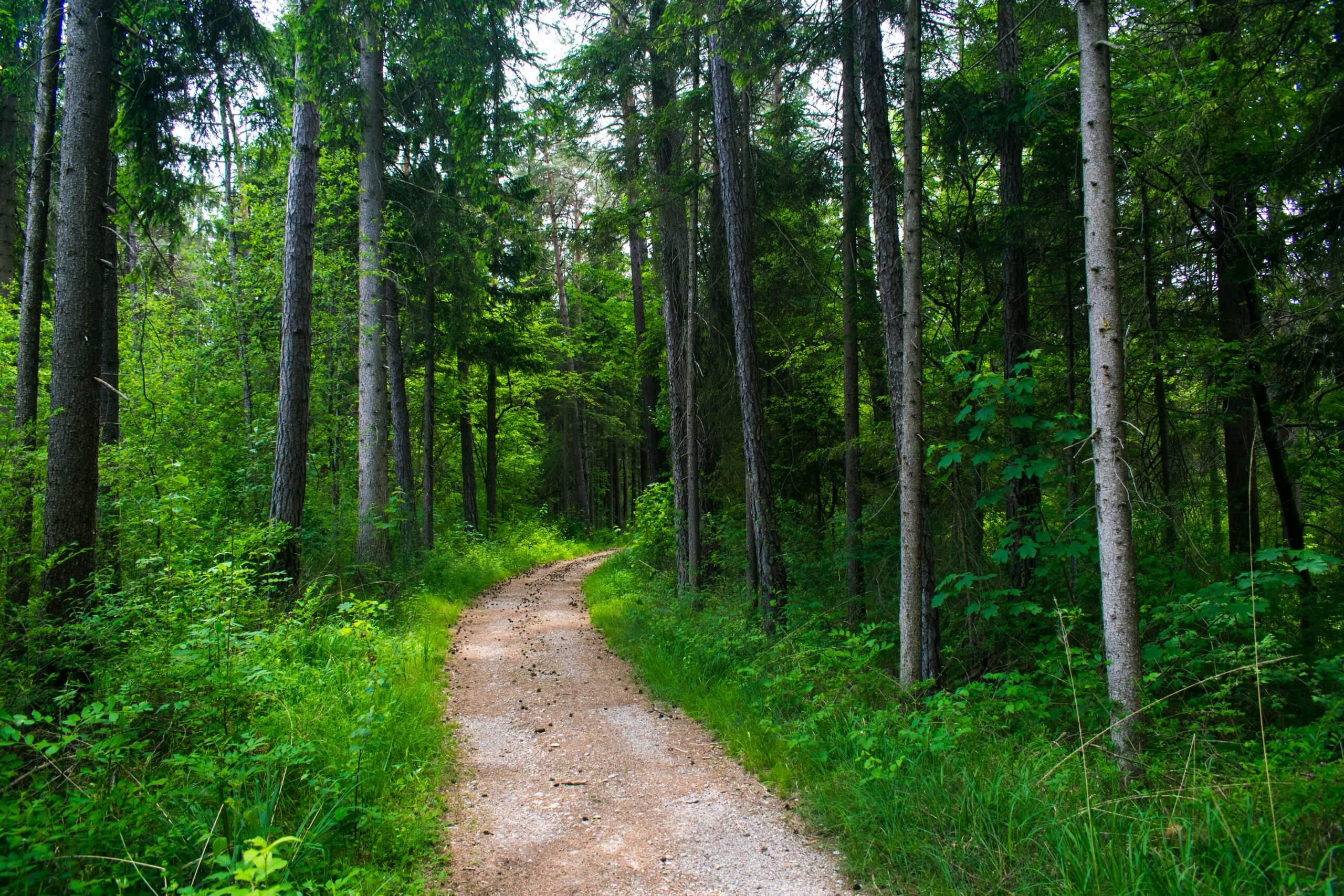
It may sound like well-meaning bullshit, but hold your judgement just a minute. In the introductory spiel to every episode of ‘How to Fail with Elizabeth Day’, the eponymous interviewer states:

And sure enough, during the 40 or so interviews with incredibly successful people (Fleabag’s Phoebe Waller-Bridge amongst them) I have listened to, phrases like “I failed there, but I’m actually so glad I did because it taught me X” have come up in nearly every case. These interviewees frequently insist they would either not have achieved X without said failure, or would not have achieved it as quickly. This attitude is simply too common to be a coincidence. In fact, if you want to get all up in the science, according to The Harvard Business Review, a number of studies have shown that:

Or in plain(er) English, we learn more from and change more as a result of failing than we do succeeding. If you look at it like that, failure is actually better than succeeding!
Certainly, when it comes to memory and education, there are a ton of studies that show students are more likely to retain things they have failed to retain previously. This is because unless otherwise instructed, human nature by and large tends to treat failure and success very differently. If we fail, the most common reaction is to analyse the failure minutely, go over every detail in our minds and come up with theories of why we might have failed, and what we might do differently next time.
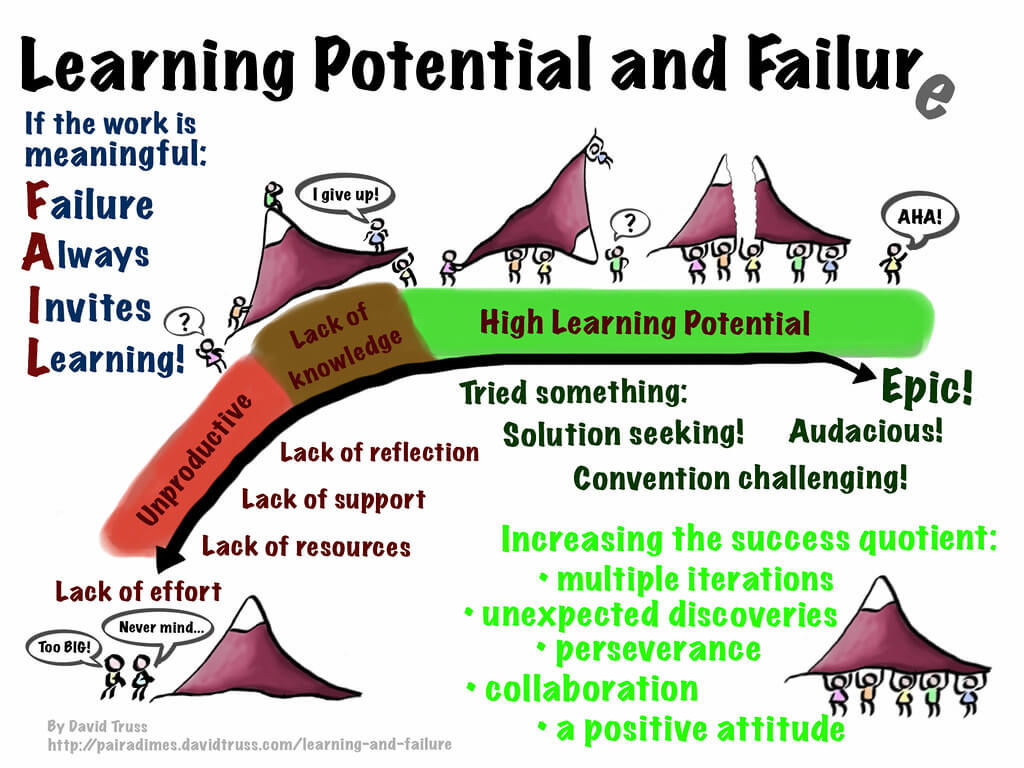
If we succeed, on the other hand, then we just skip straight to party mode and don’t give much thought to the whys and wherefores.
Certainly, when it comes to memory and education, there are a ton of studies that show students are more likely to retain things they have failed to retain previously. This is because unless otherwise instructed, human nature by and large tends to treat failure and success very differently. If we fail, the most common reaction is to analyse the failure minutely, go over every detail in our minds and come up with theories of why we might have failed, and what we might do differently next time. If we succeed, on the other hand, then we just skip straight to party mode and don’t give much thought to the whys and wherefores.

It’s worth mentioning at this point that I feel a total hypocrite, as I am currently sitting here trying to ignore a celebratory gift of prosecco for my success at getting into the BBC Writersroom’s Scottish Voices 2020 writers’ group. And I must admit, in such awesome circumstances, party mode is definitely a tempting option!
Anyway, back to failure, as I pry my eyes away from the prosecco…all of the above adds up in favour of the theory that failure is not only a necessary part of success, but is quite simply the best way to learn and grow as a person.


It’s worth mentioning at this point that I feel a total hypocrite, as I am currently sitting here trying to ignore a celebratory gift of prosecco for my success at getting into the BBC Writersroom’s Scottish Voices 2020 writers’ group. And I must admit, in such awesome circumstances, party mode is definitely a tempting option!
Anyway, back to failure, as I pry my eyes away from the prosecco…all of the above adds up in favour of the theory that failure is not only a necessary part of success, but is quite simply the best way to learn and grow as a person.
Because if we all got what we wanted instantly, with no adversity along the way, let’s face it, we’d all just be arrogant pricks. So there is that too.
Failure Is…Fun??
Okay, so failure isn’t fun. As I admitted above, I find it quite painful. BUT if you look at it from a ‘big picture’, cosmic perspective, it prolongs your pursuit of your dreams, and gives you a stronger sense of purpose in life. Quit the sniggering, I did warn you I’d be tackling deep topics here! Society may talk about failure like it’s a bad thing, but the really bad thing happens when we stop risking failure. Because if we are not risking failure, what are we doing with our lives? Where’s the sense of adventure, excitement, and growth as you go through your life? Failure is where it’s at. And if you don’t want to take my word on it, take the word of probably the most successful novelist alive:

And with that absolute diamond, I will leave you to ponder your own failures and the positive impacts they have had on your life. But no matter what happens, no matter how many times you have to pick yourself up from a perceived fail and try to learn from it, make sure you follow this profound bit of life advice I got from one of the best Drama lecturers I ever had: “Be proud of your shit”. I’d like to think she didn’t mean it literally, but I did go to a university where we had to pretend to be octopuses (octopi?) as part of the interview process, so anything is possible…turds aside, the point she was trying to make is even if what you have made is absolute rubbish and falls at the first hurdle, you should be proud of it because at the very least, you have succeeded in creating said (metaphorical) shit in the first place, where many people wouldn’t have even tried.

Take care, and remember to come back for next month’s post – out on 1st March! – to get some practical tips on how to make the most of your failures in the day-to-day. In the meantime, dream big, fail spectacularly, and See-Saw life like a pro. Xx
Recent Posts
- Top 5 Techniques To Playing At Life May 1, 2020
- The Playground of Life April 1, 2020
- Top 5 Techniques To Make Failure Work For You March 1, 2020
- What A Fail! Why Fear Of Failure Is A Forking Farce February 1, 2020
- Top 5 Techniques to Build Confidence December 1, 2019


A creative wellness blog by Amelia Nashe
Top 5 Techniques to Build Confidence
Hey there, See-Saw-ers! So over the past month, I’ve been keeping my ear to the ground and my eyes open for tips and tricks to gain confidence. And then once I’ve sniffed them out (trying to get all five senses in here, in case you hadn’t noticed!), I’ve been giving the most promising confidence building ideas a go. Feeling them out for staying power (and no, that isn’t an innuendo, it’s all in your mind), and doing everything I can to give myself a taste of what life as a confident person could be like. There we go, all five senses and we’re only one paragraph in. Don’t say I don’t give you a well-rounded reading experience!
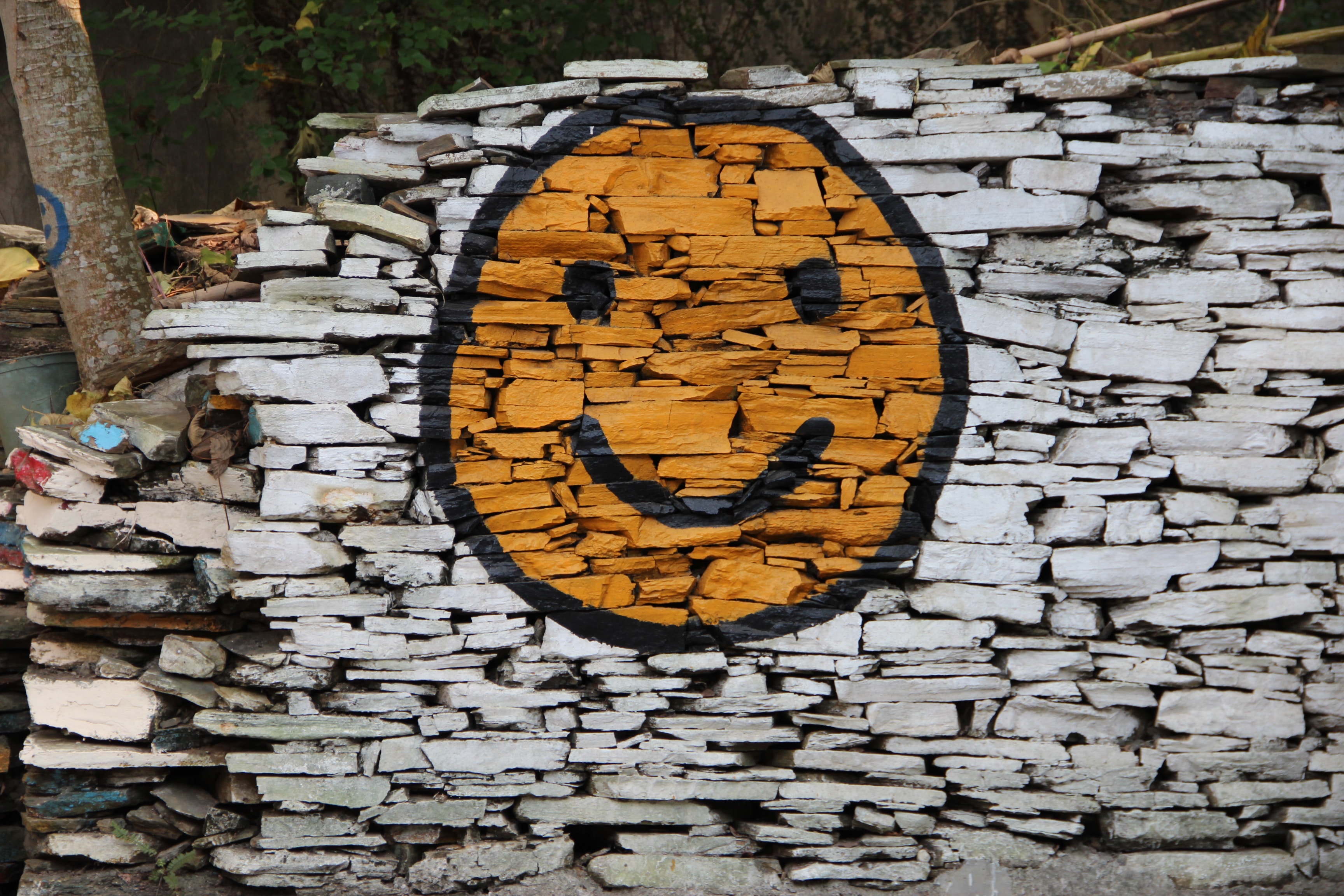
Recent Posts
Archives
Anyway, it’s been an interesting month to be doing this because I’ve been training up in a bunch of totally new skills for my new day job as a Subtitler. And when I say ‘new skills’, I mean totally alien. Stuff I didn’t even know existed before! It’s been a great opportunity to try to follow some of my own advice from my last post (check it out here if you haven’t already!), and remember that true confidence doesn’t just depend on outside evidence, but your belief in your ability to do a task.
Without further ado, here are my top five techniques to build and balance your confidence:
1. If at first you don’t succeed…try, try and try again!

My gran used to say this all the time, and it turns out that, as with many things in life, she was right. Okay, so it’s not the sexiest, quickest solution out there, and you’re probably sitting there thinking it’s not all that helpful. But the fact is practise not only ‘makes perfect’, as the saying goes, it makes confidence.
In my last post, I noted Dr Ivan Joseph’s words from his fascinating TED talk – linked below, should you wish to check it out – in which he drills home this message:



Now I know I said confidence shouldn’t rely on external factors like how good you are at a given skill, but what this repetition really does is it teaches you to be good at failing. If you are challenging yourself to learn a skill that you find really hard, the learning process itself will teach you that you can cope with failure. Learning how to pick yourself back up and try again will give you a massive confidence boost, as a huge part of having confidence is believing that no matter what happens, you can deal with it.

Of course, we all go through tons of challenging learning experiences as we grow up, but as adults I think it can be very easy to stay in your comfort zone and lose the sense of your ability to boldly go forth into the unknown and fail. As ever, the message is that it’s the journey, and not the destination, that matters.
2. Improve your self-talk.
I’m aware that this phrase might cause a near-allergic reaction in some of you, as it’s such a buzz phrase at the moment you may well be sick of it. And I have to admit, I was sceptical when I first tried it. Felt like a right plonker sitting in front of the mirror telling myself “I like you”. It resembled some terrible scene from a teen rom com, where the protagonist has to practise asking the girl/boy out so we know how shite they’re going to be at it and feel sorry for them. But done right, there is no denying it can change the way you think about yourself.



I’m really bad for habitual negative self-talk when I’m sleep-deprived and/or stressed, but because I’ve been reading up about how to use self-talk to improve your confidence recently, I caught myself in the middle of a bad bout of “I’m just being stupid”s during a tough day at work, and actually took a moment to correct myself – literally replacing these sort of phrases with “I’ll get there. It’s just going to take a bit of time to sink in”. While that may not seem like massively positive self-talk, it is something I could honestly say I believed in that moment.

And I think that’s the key point lots of people miss out with the whole positive affirmations/self-talk movement. If you don’t believe what you’re saying – or hearing, if you want to try affirmation videos – then of course it’s not going to make a difference. So it’s really important to start small with this. Start with the positive things you already believe about yourself, even if it’s a minor detail like “I like my eyelashes”. You’ll be surprised by how much more confident you start to feel after saying things like this to yourself, even if it was embarrassing to do so in the first place.


And if you can’t face the whole ‘looking yourself in the eye in the mirror’ schtick, try saying these things when doing a physical activity that makes you feel good, like yoga or walking. That way, you can slip in the positive self-talk while you’re concentrating on something else, which may make it feel less embarrassing.

There is also some scientific evidence that suggests listening to positive affirmations as you drift off to sleep/wake up is a crafty way to get your brain to change its well-worn negative pathways. The idea being that you get in the positive thinking while your brain’s defences are down, when it’s hopefully too sleepy to talk back with its characteristic ‘get the last word in’ sass.
This last bit of advice comes with the caveat that if you’re an insomniac who struggles to get to sleep in the first place, like me, it may take you a while to find the right YouTuber for this.

The first few times I tried listening to positive affirmations videos when trying to go to sleep, I found the voices very patronising and the affirmations way too big. My brain instantly went into full sass mode, and by the end of 20 minutes of forcing myself to listen to these videos, I was ready to punch someone rather than go to sleep. But I have since found a couple of different YouTubers whose voices and affirmations don’t tend to grate on me, although this still depends on my mood and sleepiness. This is very much an individual thing, so I won’t be giving out any recommendations. But it really is worth taking your time to explore what is out there, as the power of positive self-talk is real.
3. Look for feedback.
If confidence really is “based firmly on what is known”, as Psychology Today would have it, then it stands to reason that in order to build true confidence, you should know what other people think of you. I’m not saying you have to agree with everything they say, but it can be very useful to get outside of your own head and start to build a picture of the ‘you’ that other people see. After all, we all go through life acting, to an extent, and it is very hard to see yourself as other people do. You may be surprised by the feedback people give you. To them, you may appear extremely confident, even when you don’t feel it. Or perhaps your attempts to act confident are going too far, and they think you are a little too full of yourself. If this were the case, wouldn’t you rather know and fix it than go round with people who don’t know you well thinking you are arrogant?
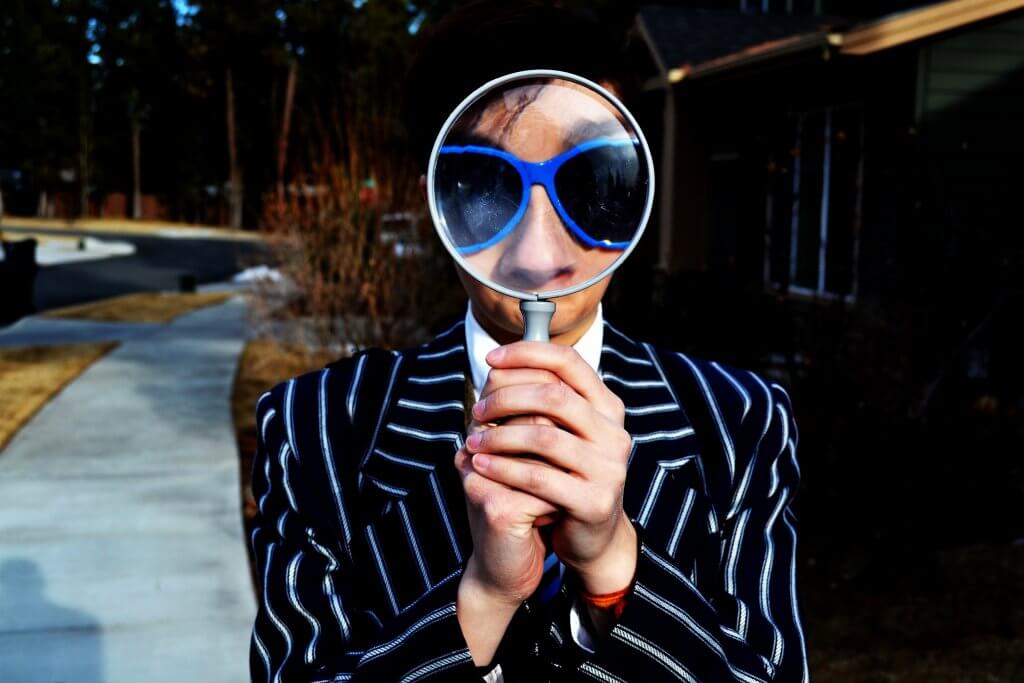
As for how to ask for feedback, it’s probably easiest to do this when someone gives you a compliment. Don’t just bat it away like it’s nothing, or immediately think “they’re only saying that to be nice”. Thank them sincerely, and ask for more details. If it’s a piece of your work that has been complimented, ask them what it was about it that impressed them, and what didn’t work so well. If it’s something more closely linked to you as a person, like your haircut, try subtly asking them what it says about you, e.g. “Thank you. I was going for an edgy artist look, but what do you reckon?” And if you get rejected for something, always, ALWAYS ask for feedback. If you don’t know why you’ve failed, it’s very hard to learn from it and build up your confidence. Basically, knowledge is power, but it is also confidence.
4. Fake it ‘til you become it.

This one is social psychologist Amy Cuddy’s baby. She has several fascinating and inspiring TED talks and articles available on the subject, and I encourage you to check out the links below for more information. But in a nutshell, this is the theory that if you pretend you are confident for long enough, you will not just convince other people that you are, but will also convince yourself and thereby actually become confident for real. So how do you go about this?
Well, as explored in the last blog post, body language plays a huge role in confidence. When you find yourself in situations where you don’t feel confident, open up your stance, uncross anything that is crossed (arms, legs, fingers), stand up tall and gesture expansively. In short, take up as much space as



possible. When you do this, anyone observing you will perceive you to be more dominant, and will treat you accordingly. Crucially, the physical act of doing this will make you feel less stressed, more relaxed and more confident.
That’s how to do it on a macro level, in the moment. But when it comes to huge life challenges, things that you find terrifying, the best way is to begin to imagine yourself as someone who can do this thing. Lots of people find it easier to build up a character in their mind for whom this challenge is a piece of cake. Then pretend that you are an actor who has been asked to play the part.
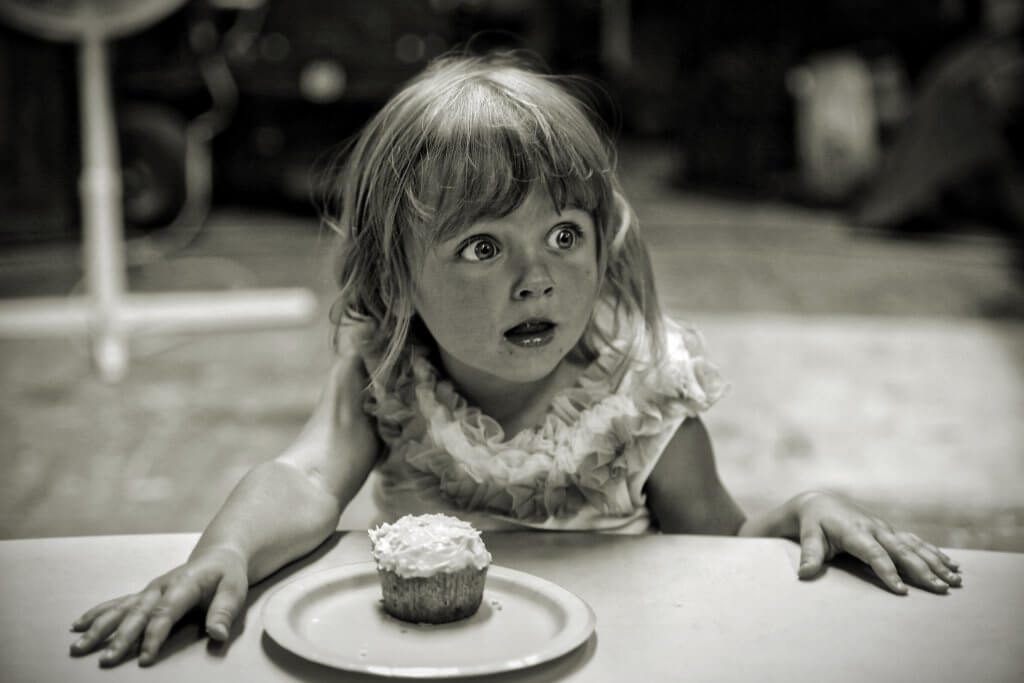
This will give you some distance from the task at hand, a layer of protection, if you like; the illusion that it’s not your neck on the line, but the character’s. But that’s fine because it’s a piece of cake for them. I’ve read up about this theory quite a lot, and what happens over time is quite simply amazing. If you pretend you are good at something for a long time – and, again, this is where repetition comes in – you will eventually forget to think you are bad at it, sort of tricking yourself into being skilled at it.

Public speaking is the classic example. No one is a born public speaker. It’s the number one fear, the thing no one naturally feels confident about doing. But those who have to do it a lot are generally very good at it, or at least confident in their ability to stand up on stage and speak in public, without freezing on the spot or running away. This is proof that faking confidence works!
And finally, if all else fails…
5. Do it first, panic later.

If there is a particular task that has your confidence levels taking a deep dive every time you so much as glance at it in your brain, don’t give yourself the time to freak out over it. It’s a simple equation. We’ve already said that negative thoughts are the enemy of confidence. And what do negative thoughts need to become centre stage? Your attention. Well, if you’ve already jumped straight into the task in question, e.g. public speaking, all your attention is hopefully going to be focussed on actually doing the task. If the negative thoughts do try to creep in and undermine your confidence, remind yourself that you need to focus on the task at hand. With a bit of effort, that should squeeze those pesky demons out.

I like to think of this as the surprise attack method. I sometimes use it with phone calls to strangers, which is something I still don’t feel confident about. If I need to make such a call, I’ll try to do it almost on impulse, where possible, if the call doesn’t need much in the way of preparation. Or if I’m planning an important call, I’ll try to do my preparation the day before, writing down the points I want to discuss/questions I want to ask them, etc., and then plan it so that I will be focussed on something else until the call happens. This is just one example though. I’m sure you can apply the ‘just get on with it’ spirit to the things in your life that you feel least confident about. And the beauty of this is that there is a very low bar for a confidence boost. If this is a task you have rarely attempted before, out of a lack of confidence or even fear, then all you have to do is get through it and you’ll get bonus points.
In confident conclusion…
Confidence is a strange beast to tame. In fact, I’m pretty sure it’s not about taming it, but more finding your inner primate and letting it loose, if the dominant body language is anything to go by…but there are things you can do to build a balanced base level of confidence, as well as inflating it temporarily, if necessary. As preparation and repetition are key, you must be prepared to be patient. You are not suddenly going to become supremely confident in everything overnight. But there are tricks you can use in the meantime to give yourself a quicker-acting boost of confidence, such as the body language.
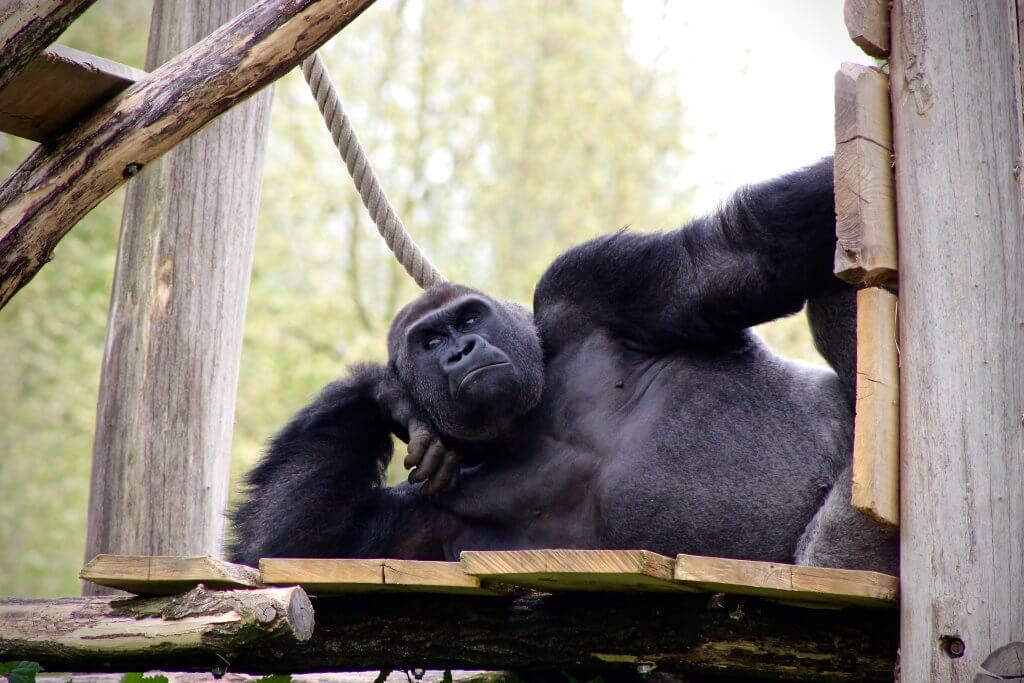
Or you can just ignore your confidence levels and face your fears with the attitude that it will be a success if you just get through it alive. Inevitably, you will, and your confidence will be boosted as a result. I hope at least one of these strategies appeals to you in your confidence building journey. I have found them all helpful at different times and in different situations, according to my mood, so I suggest you give them all several tries before you decide what works for you.
So folks, that’s my See-Saw blogging done for the year. Happy beginning of Advent, and I hope you all have a very Merry Christmas! Feels a bit weird saying that now, but I think I’m going to have to take a break with the blog over the festive period and into the New Year, so I might as well go out on a positive note!

My parting gift to you all is a reminder to be kind and patient with yourselves. This is especially important during this time of year, when it is very easy to get swept up in the stressful side of festivities, what with buying and wrapping presents, organising events, arranging travel to see family, getting those last few bits of work done before you go off for Christmas…so when you are in the middle of that blizzard of stuff, just stop for a second, take a step back and remind yourself that this is an opportunity. An opportunity to give those you love your time and attention, and to receive them yourself. If you do nothing else this month, give yourself the space to do that.
Thank you for reading See-Saw. If you want to know when I’ll next be posting, keep an eye on my Facebook page, or Twitter or Instagram, if the ol’ book of face is not your thing. See you in 2020! Xx
For more on confidence, check out:
- Psychology Today, ‘Confidence’ by Amy Alkon; Gil Noam Ed.D., Dr Habil; Vivian Wagner, Deborah Rivas Drake, Ph.D. 2019 https://www.psychologytoday.com/gb/basics/confidence
- Mind Valley ‘What Is Confidence Really About? A Guide To Rapid Empowerment’ by Shannon Terrell, 12 September 2018 https://blog.mindvalley.com/what-is-confidence/
- SkillsYouNeed ‘Building Confidence’, 2019 https://www.skillsyouneed.com/ps/confidence.html
- Art of Charm ‘Why Confidence Is More Important Than Looks’ by AJ Harbinger, 2018 https://theartofcharm.com/confidence/confidence-important-looks/
- LifeHacker ‘Why Confidence Is So Important (And How To Improve Yours)’ by Eric Ravenscraft, 2013 https://lifehacker.com/how-to-build-your-confidence-and-why-it-matters-1442414831
- YouTube TEDxTalks ‘The skill of self-confidence’ by Dr Ivan Joseph, 2012 https://www.youtube.com/watch?v=w-HYZv6HzAs
- YouTube TED Talk ‘Fake It Till You Make It’ by Amy Cuddy, 2016 https://www.youtube.com/watch?v=RVmMeMcGc0Y
- YouTube TEDxTalks ‘How to Build Self Confidence’ by CeCe Olisa, 2018 https://www.youtube.com/watch?v=ivNNgdCsY7o
- Radio 4/BBC Sounds ‘The Confidence Trick’ by Laura Barton, 2017 https://www.bbc.co.uk/sounds/play/b09bykhx
Recent Posts
- Top 5 Techniques To Playing At Life May 1, 2020
- The Playground of Life April 1, 2020
- Top 5 Techniques To Make Failure Work For You March 1, 2020
- What A Fail! Why Fear Of Failure Is A Forking Farce February 1, 2020
- Top 5 Techniques to Build Confidence December 1, 2019













